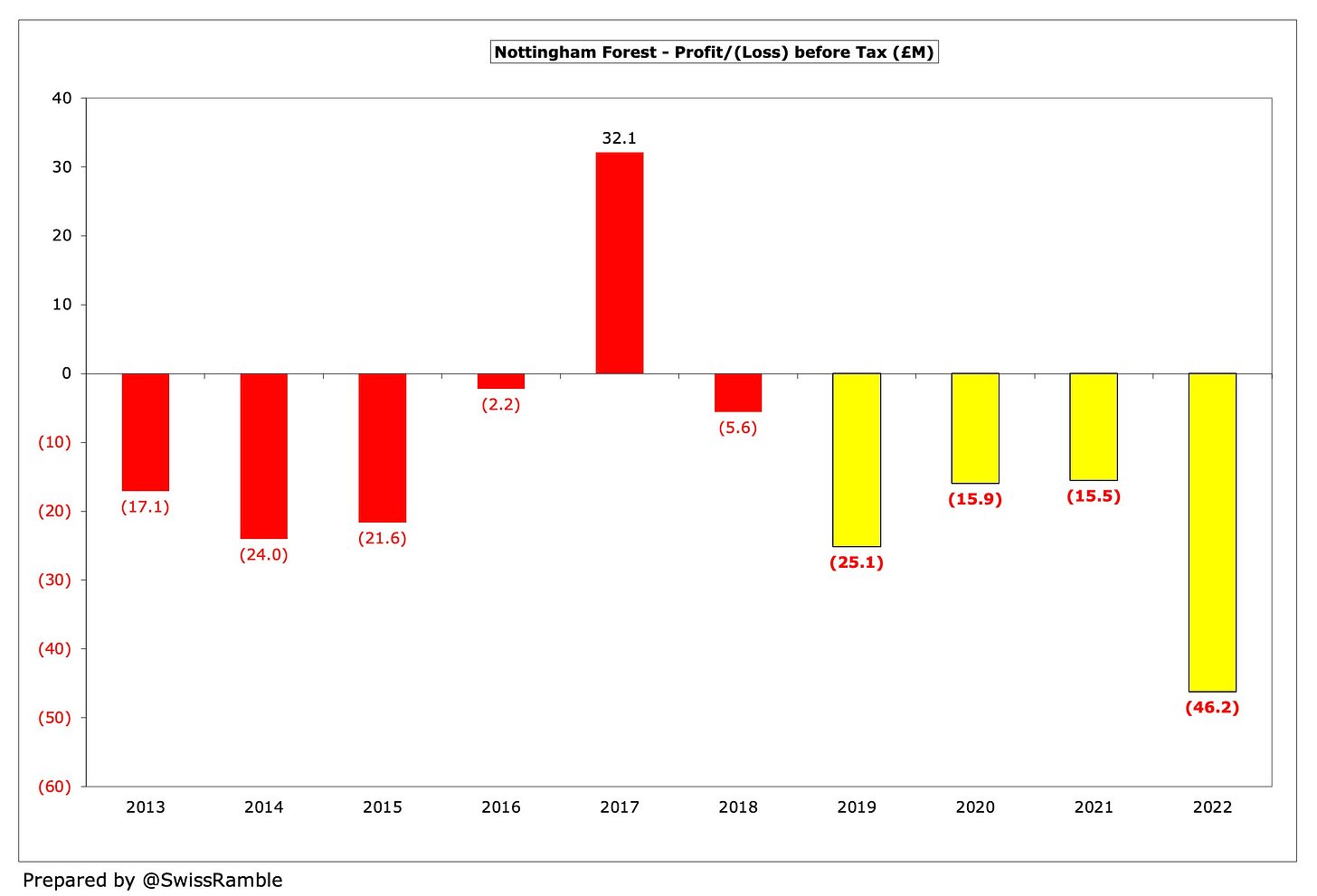So the rumours were true. Along with Everton, Nottingham Forest have been referred to an independent commission over an alleged breach of the Premier League’s Profitability and Sustainability Regulations (PSR), better known by most football fans as Financial Fair Play (FFP).
In the worst case scenario, Forest could be given a points deduction, as was the case with Everton recently, which could endanger their presence in England’s top flight.
According to the Premier League, Forest have “confirmed that they are in breach of the league’s PSR, as a result of sustaining losses above the permitted thresholds for the assessment period ending season 2022/23.”
Forest were quick to respond, “Nottingham Forest acknowledges the statement from the Premier League confirming that the club has today been charged with a breach of the league’s profitability and sustainability rules. The club intends to continue to cooperate fully with the Premier League on this matter and are confident of a speedy and fair resolution.”
The obvious questions are:
Whether Forest have indeed breached Profitability and Sustainability Regulations?
What has caused this result?
To answer this perfectly, we would need to have access to Forest’s accounts for the 2022/23 season, but unfortunately these have only been shared with the Premier League and are unlikely to be publicly available for a few weeks.
However, if we look at Forest’s situation at the end of 2021/22, we should get a reasonable indication of the factors.
Profitability and Sustainability Rules
First, a quick reminder of the PSR. In the Premier League these rules allow a £5m loss a year, which can be boosted by £30m secure funding, giving allowable losses of £35m a year. The monitoring period covers three years, so this works out to a maximum allowable loss of £105m.
Secure funding is defined as either an equity contribution or an irrevocable commitment to make a payment for shares. A loan from the owners is not sufficient.
These regulations are aligned with the Championship, though the limits in England’s second tier are much lower, namely a £5m loss plus £8m secure funding, giving an allowable loss of £13m a year.
Up to 2021/22, Forest had a maximum allowable loss of £39m over the 3-year monitoring period.
This limit increased following Forest’s promotion from the Championship to the Premier League, so their allowable loss for 2022/23 was £61m, i.e. two years in the Championship at £13m apiece and one year in the top flight at £35m.
However, this was still much lower than the £105m allowance for clubs that were present in the Premier League throughout the period.
The Premier League relaxed the regulations to neutralise the adverse impact of COVID, which means that the 2022 monitoring period assessed the seasons 2019/20 and 2020/21 as a single (average) period. In other words, this period effectively covered four years.
PSR 2021/22
On the face of it, things look pretty bad for Forest, as they have consistently lost money. In fact, have only reported a profit once since 2005 – and that was entirely due to a £40m loan write-off in 2017.
Reported Losses
In the four years covered by PSR up to 2021/22, their losses were over £100m, including a hefty £46m deficit in the season they were promoted. Not only was this the largest loss in Forest’s history, but it was also the 10th highest ever in the Championship.
Keep reading with a 7-day free trial
Subscribe to The Swiss Ramble to keep reading this post and get 7 days of free access to the full post archives.







